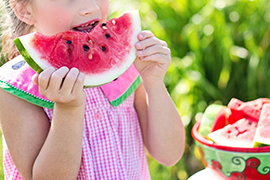
Environmental Health
The problem: Providers recognize that significant environmental issues exist in some child care programs. However, identifying and addressing these issues can seem like an overwhelming task.
One solution: Safety and Environment: Protecting Kids from Hidden Hazards, a new e-book from CCAoA, which contains concrete actions that CCR&Rs and providers can take to reduce environmental hazards.
The e-book covers four topics:
- Tips for Choosing a Safe Child Care Site
When providers select a location for their facility, it may not occur to them to check for environmental contamination. It’s easy to overlook if there’s no visible problem or telltale smell. But there may be contaminants in the air, soil and water that can harm child and staff health.
- Minimizing Lead Exposure in Child Care
When we hear the term “lead exposure,” we often think of lead-contaminated paint in older buildings. Many states require child care facilities to remove chipped and peeling paint. But children can ingest lead in other ways: by drinking water carried through old lead by pipes, or by playing in soil contaminated by lead. - Keeping Kids Safe in Parking Lots and Driveways
These surfaces pose two major health and safety issues: how to keep children away from moving vehicles, especially during drop-off and pick-up times; and air pollution caused by exhaust from vehicles.
- Reducing the Use of Toxic Chemicals
Clean, pest-free child care facilities help prevent the spread of diseases. But, the chemicals providers use for cleaning and pest control can be toxic. This section presents ideas for how programs can meet the safety requirements on sanitation while minimizing the use of hazardous chemicals.




